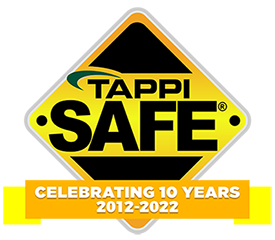 Search
Search
Use the search bar or filters below to find any TAPPI product or publication.
Filters
Content Type
Publications
Level of Knowledge
Collections
Journal articles

Magazine articles

Incorporation of post-consumer pizza boxes in the recovered fiber stream: Impacts of grease on finished product quality, TAPPI Journal March 2021
ABSTRACT: Grease and cheese contamination of used pizza boxes has led to misunderstanding and controversy about the recyclability of pizza boxes. Some collection facilities accept pizza boxes while others do not. The purpose of this study is to determine whether typical grease or cheese contamination levels associated with pizza boxes impact finished product quality. Grease (from vegetable oil) and cheese are essentially hydrophobic and in sufficiently high concentration could interfere with interfiber bonding, resulting in paper strength loss.Findings from this study will be used to determine the viability of recycling pizza boxes at current and future con-centrations in old corrugated containers (OCC) recovered fiber streams. These findings will also be used to inform the acceptability of pizza boxes in the recycle stream and educate consumers about acceptable levels of grease or cheese residue found on these recycled boxes.
Journal articles

Magazine articles

Ultrastructural Behavior of Cell Wall Polysaxxharides, TAPPI Journal April 2022
ABSTRACT: Considerable information on the ultrastructural organization of the plant cell wall and the supermolecular arragement of the cell wall components, in particular of cellulose, has been obtained with the electron microscope.
Journal articles

Magazine articles

Dynamic out-of-plane compression of paperboard — Influence of impact velocity on the surface, TAPPI Journal February 2024
ABSTRACT: Processes that convert paperboard into finished products include, for example, printing, where the paperboard is subjected to rapid Z-directional (ZD) compression in the print nip. However, measuring and evaluating the relevant properties in the thickness direction of paperboard are not necessarily straightforward or easy. Measuring at relevant, millisecond deformation rates further complicates the problem. The aim of the present work is to elucidate some of the influences on the compressive stiffness. Both the initial material response and the overall compressibility of the paperboard is studied. In this project, the effect on the material response from the surface structure and the millisecond timescale recovery is explored.The method utilized is a machine called the Rapid ZD-tester. The device drops a probe in freefall on the substrate and records the probe position, thus acquiring the deformation of the substrate. The probe is also allowed to bounce several times on the surface for consecutive impacts before being lifted for the next drop. To investigate the time dependent stiffness behavior, the probe is dropped several times at the same XY position on the paperboard from different heights, thus achieving different impact velocities. The material response from drops and bounces combined allows study of the short-term recovery of the material. The material in the study is commercial paperboard. The paperboard samples are compared to material where the surface has been smoothed by grinding it. Our study shows that there is a non-permanent reduction in thickness and a stiffening per bounce of the probe, indicating a compaction that has not recovered in the millisecond timescale. Additionally, a higher impact velocity has an initial stiffening effect on the paperboard, and this is reduced by smoothing the surface.
Journal articles

Magazine articles

Recovery boiler back-end heat recovery, TAPPI Journal March 2023
ABSTRACT: Sustainability and efficient use of resources are becoming increasingly important aspects in the operation of all industries. Recently, some biomass-fired boilers have been equipped with increasingly complex condensing back-end heat recovery solutions, sometimes also using heat pumps to upgrade the low-grade heat. In kraft recovery boilers, however, scrubbers are still mainly for gas cleaning, with only simple heat recovery solutions. In this paper, we use process simulation software to study the potential to improve the power generation and energy efficiency by applying condensing back-end heat recovery on a recovery boiler. Different configurations are considered, including heat pumps. Potential streams to serve as heat sinks are considered and evaluated. Lowering the recovery boiler flue gas temperature to approximately 65°C significantly decreases the flue gas losses. The heat can be recovered as hot water, which is used to partially replace low-pressure (LP) steam, making more steam available for the condensing steam turbine portion for increased power generation. The results indicate that in a simple condensing plant, some 1%•4% additional electricity could be generated. In a Nordic mill that provides district heating, even more additional electricity generation, up to 6%, could be achieved. Provided the availability of sufficient low-temperature heat sinks to use the recovered heat, as well as sufficient condensing turbine swallowing capacity to utilize the LP steam, the use of scrubbing and possibly upgrading the heat using heat pumps appears potentially useful.
Magazine articles

China: now and in the future, TAPPI JOURNAL, May 1996, Vol. 79(5)
China: now and in the future, TAPPI JOURNAL, May 1996, Vol. 79(5)
Magazine articles

A personal mount st. helens experience, TAPPI JOURNAL, May 2000, Vol. 83(5)
A personal mount st. helens experience, TAPPI JOURNAL, May 2000, Vol. 83(5)
Magazine articles

Optical properties of pulp and paperâ?? New standardization proposals, December 1995 Tappi Journal [95Dec45.pdf]
Optical properties of pulp and paper - new standardization proposals, TAPPI JOURNAL, December 1995, Vol. 78(12)
Journal articles

Magazine articles

Evaluation of soap recovery efficiency from black liquor — analytical tools, TAPPI Journal April 2023
ABSTRACT: Soap skimmings (“soap”) are typically recovered from black liquor in kraft mills that process a high percentage of softwood. In many mills, the recovery of soap is inefficient, negatively impacting performance of evaporators and recovery boilers and resulting in loss of potential revenue. A thorough evaluation of soap recovery performance in a kraft mill requires measurement of soap content in black liquor at various sampling locations, especially around the soap skimmer.The standard laboratory method for evaluating soap content in black liquor is a complex, multi-step process that relies on solvent extraction and titration; most mills send these samples to an outside laboratory for this analysis. In this study, 100 black liquor samples, with a wide range of soap concentrations, were tested by the standard solvent extraction method. After additional dilution, each sample was also tested for surface tension with a bubble pressure tensiometer. The results were found to correlate very closely with the solvent extraction tests results. This alternate method, using surface tension measurements of diluted black liquor samples, produces rapid results and can be easily implemented in most kraft mills, which would facilitate much more frequent in-house evaluations of soap recovery performance.
Journal articles

Magazine articles

Lignin-based resins for kraft paper applications, TAPPI Journal November 2019
ABSTRACT: We investigated miscanthus (MS) and willow (W) lignin-furfural based resins as potential reinforce-ment agents on softwood and hardwood kraft paper. These resins might be sustainable alternatives to the commercial phenolformaldehyde (PF) resins. Phenol is a petrochemical product and formaldehyde has been classified as a carcinogen by the U.S. Environmental Protection Agency. The lignin used in this study was derived from hot water extraction (160ºC, 2 h) of MS and W biomass, and may be considered sulfur-free. These biorefinery lignins were characterized for their chemical composition and inherent properties via wet chemistry and instrumental techniques. The resin blends (MS-resin and W-resin) were characterized for their molecular weight, thermal behavior, and mechanical properties. Mechanical properties were measured by the resin’s ability to reinforce softwood and hard-wood kraft papers. The effect of adding hexamethylenetetramine (HMTA), a curing agent, to the resin was also examined. Mixtures of PF and lignin-based resins were investigated to further explore ways to reduce use of non-renewables, phenol, and carcinogenic formaldehyde. The results show that lignin-based resins have the potential to replace PF resins in kraft paper applications. For softwood paper, the highest strength was achieved using W-resin, without HMTA (2.5 times greater than PF with HMTA). For hardwood paper, MS-resin with HMTA gave the highest strength (2.3 times higher than PF with HMTA). The lignin-based resins, without HMTA, also yielded mechanical properties comparable to PF with HMTA.
Journal articles

Magazine articles

A case study review of wood ash land application programs in North America, TAPPI Journal February 2021
ABSTRACT: Several regulatory agencies and universities have published guidelines addressing the use of wood ash as liming material for agricultural land and as a soil amendment and fertilizer. This paper summarizes the experiences collected from several forest products facility-sponsored agricultural application programs across North America. These case studies are characterized in terms of the quality of the wood ash involved in the agricultural application, approval requirements, recommended management practices, agricultural benefits of wood ash, and challenges confronted by ash generators and farmers during storage, handling, and land application of wood ash.Reported benefits associated with land-applying wood ash include increasing the pH of acidic soils, improving soil quality, and increasing crop yields. Farmers apply wood ash on their land because in addition to its liming value, it has been shown to effectively fertilize the soil while maintaining soil pH at a level that is optimal for plant growth. Given the content of calcium, potassium, and magnesium that wood ash supplies to the soil, wood ash also improves soil tilth. Wood ash has also proven to be a cost-effective alternative to agricultural lime, especially in rural areas where access to commercial agricultural lime is limited. Some of the challenges identified in the review of case studies include lengthy application approvals in some jurisdictions; weather-related issues associated with delivery, storage, and application of wood ash; maintaining consistent ash quality; inaccurate assessment of required ash testing; potential increased equipment maintenance; and misconceptions on the part of some farmers and government agencies regarding the effect and efficacy of wood ash on soil quality and crop productivity.






